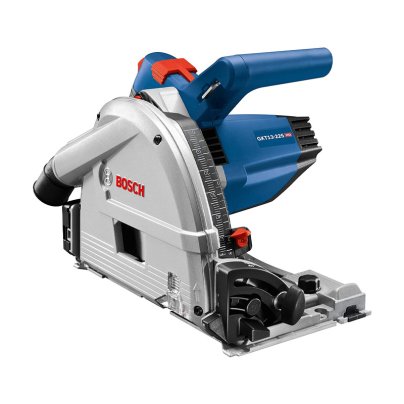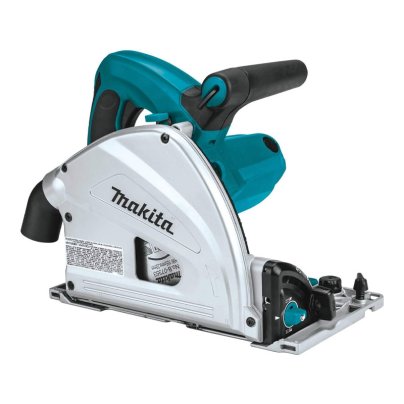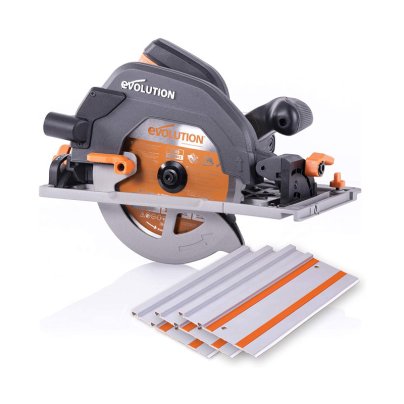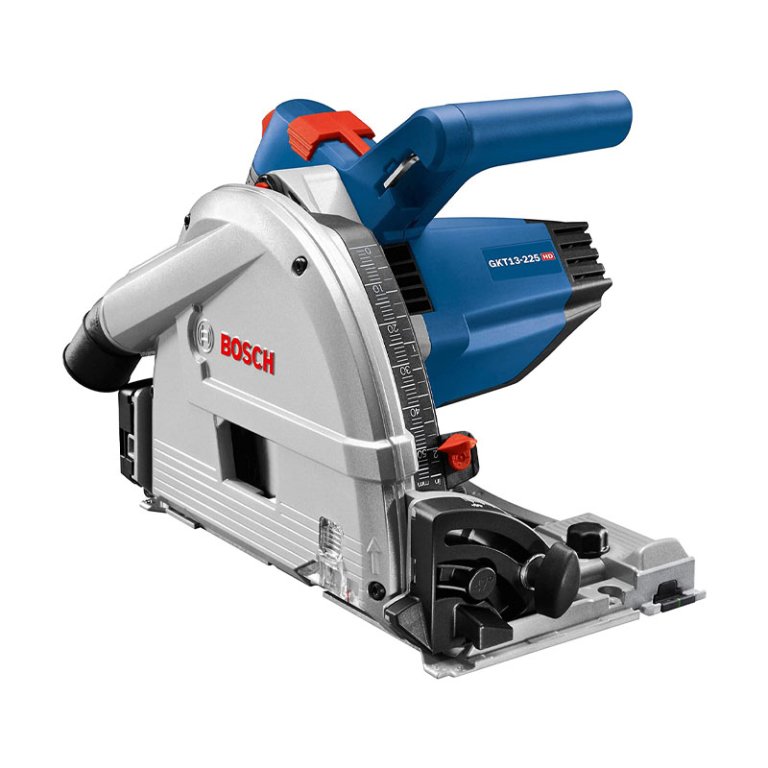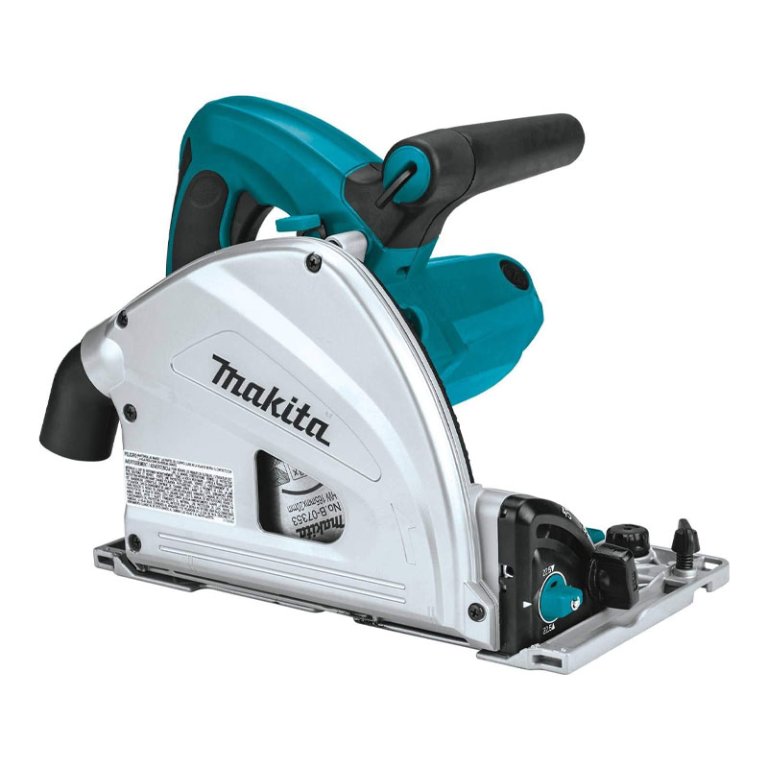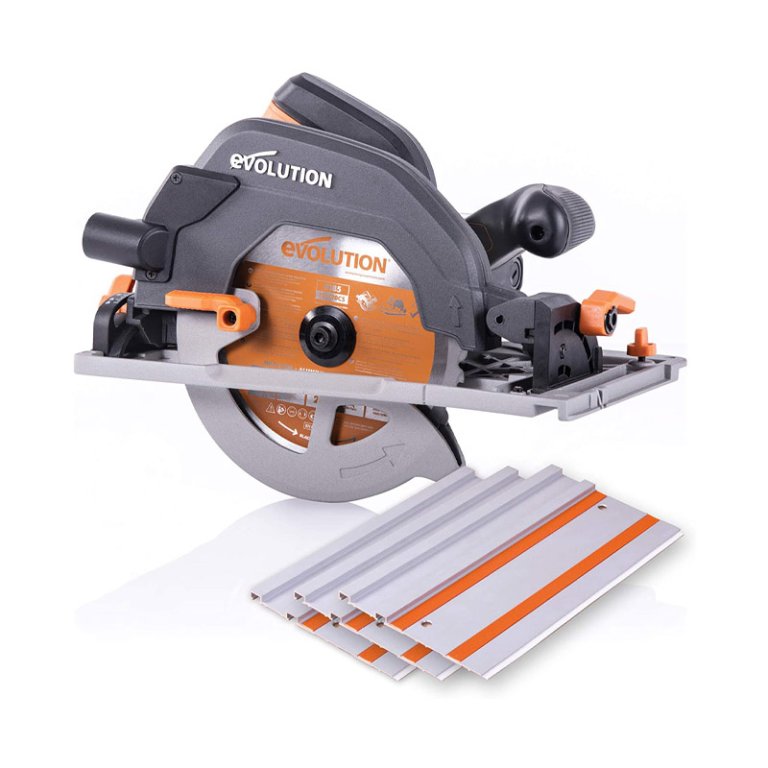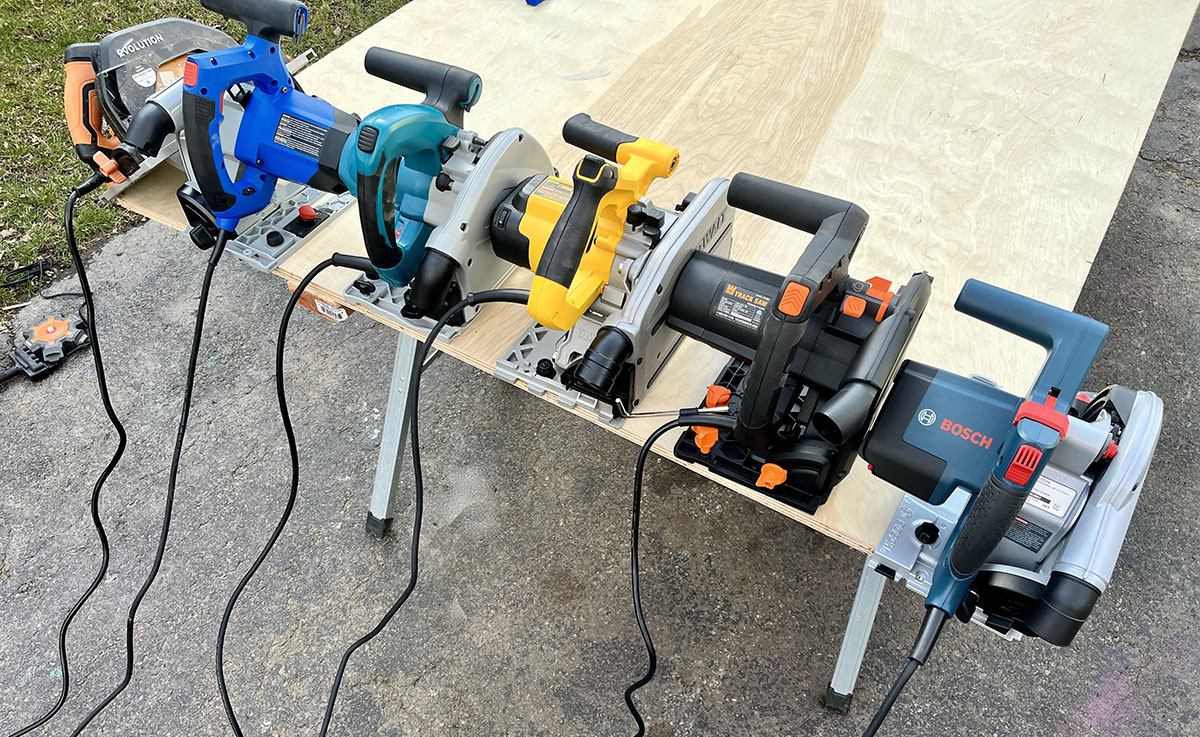
We may earn revenue from the products available on this page and participate in affiliate programs. Learn More ›
For ripping sheet goods or cutting long lengths of lumber to width, a track saw can often be easier to work with than its counterpart, the table saw. Track saws make fast, accurate, repeatable cuts on sheet goods like plywood, lumber, and medium-density fiberboard.
Track saws are not a replacement for table saws; they’re a companion. While they have a bevel capacity of up to 47 degrees like a typical circular saw, they’re purpose-built for precise cuts in heavy, hard-to-manage material and are mainly used for square cuts. Probably more precisely referred to as a plunge cut track saw, the tool plunges into the work to begin the cut.
They can be quickly clamped in place and provide incredibly accurate cuts, even in dense materials. And the best track saw can be the go-to saw for many jobs. We have field-tested some of the best track saws on the market, so we can deliver a solid list of top-quality track saws that are fast, reliable, and powerful enough to get the job done.
However, our favorite track saw is the Bosch GTK13-225 6.5-Inch Track Saw. We like it because of its 13-amp power output, wide range of options for bevel cuts, and its 63-inch-long tracks.
Keep reading to find out what to consider when selecting a new track saw, and check out the hands-on reviews for these top picks below.
- BEST OVERALL: Bosch GTK13-225 6.5-Inch Track Saw
- BEST BANG FOR THE BUCK: Makita 6.5-Inch Plunge Circular Saw With Tool Case
- BEST MULTI-MATERIAL SAW: Evolution R185CCSX 7.25-Inch Circular Track Saw Kit
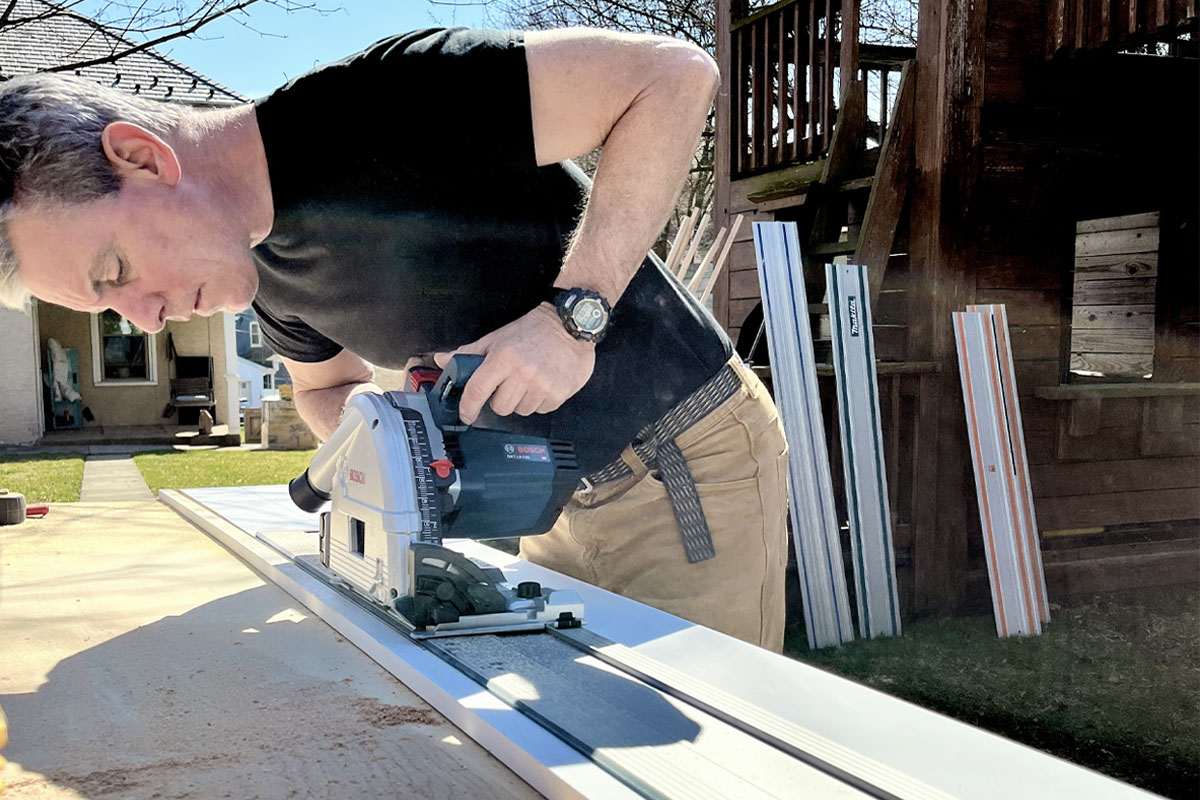
| Type | Bevel | Tracks included | |
| Bosch GTK13-225 6.5-Inch Track Saw | Corded, 13-amp | Yes, -1 to 47 degrees | Yes, two 63-inch-long tracks |
| Makita 6.5-Inch Plunge Circular Saw With Tool Case | Corded, 12-amp | Yes, -1 to 47 degrees | Yes, 55-inch-long track |
| Evolution R185CCSX 7.25-Inch Circular Track Saw Kit | Corded, 15-amp | Yes, 0 to 45 degrees | Yes, 40 inches |
Our Top Picks
We field-tested all of the products on our top picks list for the best track saws. Our findings aim to help shoppers choose a high-quality saw that fits their needs and budget.
Best Overall
Bosch GTK13-225 6.5-Inch Track Saw
See ItWhat We Like
- Plunge cut track saw; suitable for accurate depth and cuts
- Most powerful option included on our list; 13-amp power output
- Wide range of options for bevel cuts; suitable for a variety of cuts
- Provides splinter-free cuts while in operation; will not leave marks on the wood
What We Don’t Like
- Most costly option on the list; may be too pricey for some shoppers
Product Specs
- Type: Corded, 13-amp
- Bevel: Yes, -1 to 47 degrees
- Tracks included: Yes, two 63-inch-long tracks
The GKT13-225 track saw from Bosch performed the most cuts the best and the easiest in the tests we ran. It’s the easiest saw in the group to engage the thin rail on its track. No fussing around trying to get it just so. It slides easily.
The motor is plush even under duress like cutting red oak or composite decking. It runs smoothly, and there was no need to dial down its variable speed because the cuts were crisp with near-zero tear-out or blade marks and left in the work.
It comes with two 63-inch rails and a great carry bag to keep rails safe on a job site or in a busy shop. The 126 inches of rail, plus the longest cord on any track saw we tested, makes it an absolute go-to for long rips and crosscuts in deck-building activities.
There was zero vibration with a nice, upright handle position, sensible switches, and easily the most power. Plus, it can provide -1 to 47-degree bevel cuts. This saw delivered on all counts.
Read our full review: Bosch GTK13-225 6.5-Inch Track Saw
Get the Bosch track saw at Amazon or The Home Depot.
Best Bang for the Buck
Makita 6.5-Inch Plunge Circular Saw With Tool Case
See ItWhat We Like
- 12-amp motor delivers heavy-duty, excellent power for heavy-duty straight cuts
- Smooth operation on dense materials; limited vibration for accuracy while cutting
- Plunge cut track saw; aids in precise cuts and depth preference
- Stackable tool case included for portability and storage; can be transported if necessary
What We Don’t Like
- Somewhat labored in composite decking rips; may take a lot of effort for smooth cuts
- Electronic brake is a little soft; may be tricky for some users to handle
Product Specs
- Type: Corded, 12-amp
- Bevel: Yes, -1 to 47 degrees
- Tracks included: Yes, 55-inch-long track
This track saw has our favorite plunge-action in the bunch—it’s just simple and seamless—delivers beaucoup power and supremely clean cuts with few saw marks at full speed in oak and no tear-out in maple plywood. It is also a great value with an all-pro performance at a reasonable price that yields a terrific cost-to-value ratio.
With a 55-inch-long rail, the Makita runs smoothly and simply, and it delivered top-notch cuts in everything we threw at it. It has a nice kit box, a soft-ish start, and easy electronic brake, and we felt it when cutting super-dense composite decking.
Get the Makita track saw at Amazon, The Home Depot, or Acme Tools.
Best Multi-Material Saw
Evolution R185CCSX 7.25-Inch Circular Track Saw Kit
See ItWhat We Like
- 15-amp motor makes it suitable for heavy-duty cutting and use
- 7.25-inch blade cuts up to 2.5 inches deep for thicker materials
- Short tracks can be more manageable for crosscutting boards easily
What We Don’t Like
- Aligning 3 pieces of track can be challenging for some users
- Short track requires moving it more often for longer cuts
Product Specs
- Type: Corded, 15-amp
- Bevel: Yes, 0 to 45 degrees
- Tracks included: Yes, 40 inches
The Evolution track saw kit is a unique take on the category. While it is a circular saw that rides on a track and is entirely suitable for some carpentry jobs like resizing a hollow core door (it performed nicely doing so), this is a circular saw first. It just happens to have a shoe (aka base or plate) that adapts to its 40-inch, screw-together track. As a result, the fact that it left clean cuts in almost nothing else isn’t a demerit.
This tool is designed for the occasional straight cut in finish stock but is better suited to sizing metal roofing or cutting square tube steel, PVC pipe, or plastic roofing.
It’s full-on circ saw power, not woodshop whisper-quiet precision. It doesn’t plunge, and the guard has to be raised to engage the track and item being cut. But for what it’s designed to do, it does it.
Get the Evolution track saw kit at Amazon.
ALSO TESTED
The Wen CT1065 6.5-Inch Plunge Cut Sidewinder Track Saw comes at an affordable price; however, the tool has been value engineered to be so low-cost that it doesn’t do what needs to be done. It has three depth stops: approximately ¼-inch, ⅝-inch, and full depth. Unfortunately, none of these are the most common depths used, which are 1 inch (for breaking down plywood) and 1¼ inches for rips and crosscuts in decking. While those materials can be cut at full depth—and the Wen will cut them—the substrate is also cut. Overall, this track saw may not only be tough to work with, but isn’t suitable for all track-saw tasks.
Jump to Our Top Picks
How We Tested the Best Track Saws
Track saws’ bread and butter are the ability to break down sheet goods for further processing on a table saw or simply to the desired width. We tested for ease of setup, ease of use, smoothness of operation, and plunge action in maple plywood, solid sawn red oak, composite decking, and finger-jointed pine. We looked for saw marks left in the edge cuts and tear-out in the surface of the work being cut. We considered switches, adjustments, and dust collection.
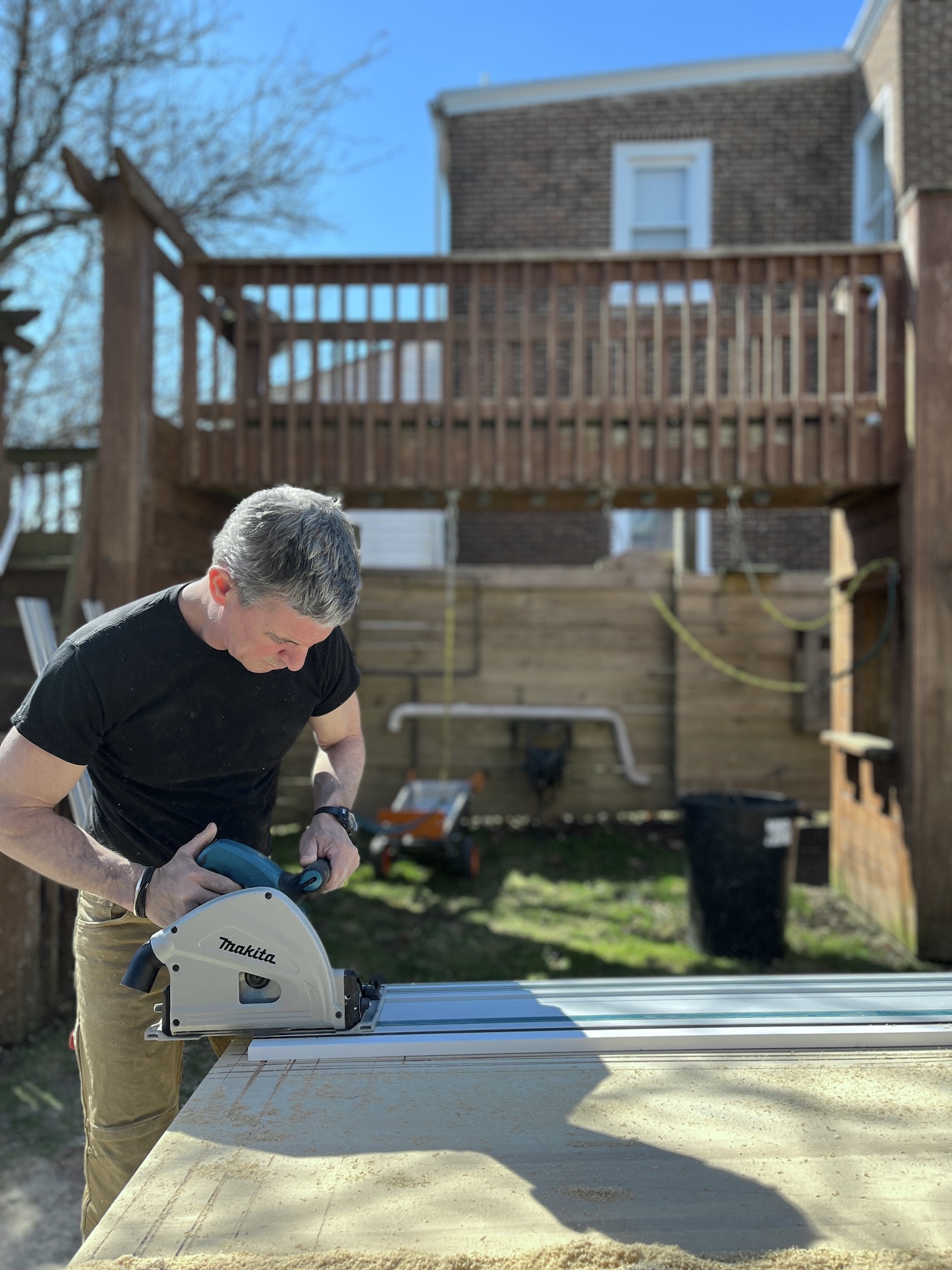
What to Consider When Choosing a Track Saw
While track saws aren’t new, they’re relatively new to the home DIY scene, so it can be tough to know which model might work for a particular scenario or budget. Here are some tips to consider when shopping for the best track saw.
Blade Size
A track saw’s blade size has everything to do with the thickness of the material it can cut. Most track saws use 6½-inch blades and are capable of cutting materials around 2 inches thick.
Track saws with larger blades, in the 8¼-inch range, cut materials closer to 2¾ inches thick. Miniature track saw models use blades 4½ inches in diameter, and they cut materials just larger than 1 inch thick.
Speed Settings
Some of the best track saws feature speed settings, which is a differentiator compared to their circular saw counterparts. Controlling the speed allows the user to avoid burning the wood, dulling the saw blade, and creating more splinters than necessary.
If a track saw features speed adjustments, they’re typically in the range of 2,000 rpm on the low end and 5,000 rpm on the high end. For soft materials like framing lumber or pine plywood, the high-speed settings are best. It’s best to dial the speed down toward the lower end of the range for dense woods like locust or walnut. The lower speed helps prevent unsightly burn marks and keeps the blade in good cutting condition.
When slowing down blade rotation, be mindful of kickback. Some track saws have anti-kickback features built-in.
Bevel Capacity
Track saws with adjustable bevels are far more flexible and versatile than other models. Most of a track saw’s duty consists of making 90-degree square cuts. However, the ability to make bevel cuts can save the user an extra step in the production process.
Cutting 45-degree bevels on boards or sheet goods helps when building bookshelves or furniture, as it increases the surface area for better glue contact. It also creates a clean joint without the need for edge-banding to cover undesired plywood edges.
Motor Power
Corded track saws, like circular saws, should be powerful enough to get the job done. It’s difficult, though, to quantify their power in a useful way that a new tool shopper can understand.
Manufacturers have modeled most track saws after sidewinder-style circular saws (also called Direct Drive motors), and they love to boast about amperages on their packaging. However, amperage actually pertains to the amount of electrical current the motor can draw; it doesn’t directly represent power.
For cordless track saws, the power is a little easier to judge based on the battery’s voltage rating. A 20-volt battery-operated saw will generally be more powerful than an 18-volt saw. There are exceptions to this rule, but this is a general guideline to follow.
Corded vs. Cordless
The debate has raged forever as to which is better: corded or cordless track saws. When it comes to a track saw, the saga continues. On one hand, corded track saws will usually feel more powerful, and users don’t have to worry about changing batteries. That’s particularly helpful in the middle of a tough cut (like a thick piece of oak or walnut).
Stopping in the middle of a cut to change the battery may result in unsightly saw marks on the cut edge. On the other hand, cordless track saws don’t have a power cord to get hung up on the end of a lengthy board while ripping it to width. This can also force work to stop to adjust the cord, resulting in the same unsightly marks or accidentally moving the track, even ever so slightly.
Ultimately it comes down to what’s more important for the user: unlimited power (where power is available) or portability (as long as there are spare batteries on hand).
Cord Length
It might not seem like a big deal, but cord length can directly affect the usability of any saw but especially a track saw. Roofers and framing carpenters sometimes remove the standard cord on their circular saw and replace it with a 25-foot cord, so the cord ends are less prone to snagging behind them.
With a track saw, the longer the cord, the more range there will be for manipulating long tracks and materials. Users almost always require an extension cord, but they can hang up. If the track saw uses a 6-foot cord but cutting an 8-foot sheet of plywood is on the to-do list, the extension cord may need to be pulled along while cutting. Eventually, the cord may hang up on the end of the track.
Of course, this can be avoided altogether by hanging the cord off to either side of the workpiece, but still, a longer range will help keep the cord from hanging up on a workbench or sawhorse.
Track Length
Tracks come in different lengths for obvious reasons. For the workshop, however, it’s best to have a 2-, 4-, and 8-foot track for quick and easy setup and consistent results. Some tracks are modular, and they’re great for job site work. This allows a user to snap or bolt smaller lengths together and use them as a longer track, ideal for composite decks where parting boards are often cut into the decking to hide cut ends.
Crosscutting a 12-inch-wide board is easy with a track saw, but it doesn’t require a 4-foot track. Similarly, ripping a plywood sheet is what track saws are best at, but a 4-foot track will be an inconvenience if it has to be reset halfway through the cut. Resetting the track also adds a degree of error to the cut. If the user is not careful, they may end up with a long cut that isn’t as straight as it could be. This negates the purpose of a track saw.
Safety Features
Track saws are not just circular saws with specially designed bases that ride along a track, though they share the circ saw’s DNA. They have variable speed, plush motors, a much better blade and are purpose-built for dialed-in work. However, the very nature of a track saw makes it safer to use than a circular saw over long cuts.
The track provides a predetermined path for the saw blade, so it’s possible to look ahead and see if there are any obstacles that might cause kickback. Should the saw kick back, cam locks featured in several models will stop the saw from pushing back at the user or jumping off the track.
Many carpenters guide their circular saws with a site-built jig called a “shoot board” or “shooting board.” Essentially a “track” made from plywood, it’s a go-to for when cuts really need to be straight, like when trimming a door.
Track saws take this principle to an entirely different level with anti-chip rubber strips on the track edges and gummy rubber strips on the bottom of the track to help keep them in place. However, they’re not infallible, and for serious cuts, clamps are available that lock the track to the table. There also are chip guards and high-quality blades for the kinds of work these saws are tasked to do.
Tips for Using a Track Saw
Track saws make big things small, cleanly, and accurately, and the same safety rules apply for track saws as typical circular saws. You should wear hearing and eye protection to prevent injuries, and avoid wearing loose clothing. Also, be sure that the blade isn’t going to contact anything before cutting.
Be mindful of the cord’s location before you start cutting longer boards. If possible, position the cord so it won’t snag on the track or get caught between the workpiece and the table while cutting.
Occasionally, track saws tracks don’t line up perfectly straight. When that’s the case, you can cut them square with a miter saw (as long as they’re aluminum). Be sure to wear ear and eye protection as well as gloves while cutting to prevent injuries.
- Use the same safety precautions you would as with a circular saw.
- Be mindful of the cord to prevent it from snagging while cutting.
- If the tracks don’t line up perfectly, square them up with a miter saw.
FAQs
That’s a lot of information about the best track saws, and it may seem a bit overwhelming. Don’t let a few nagging questions derail your shopping; the following section aims to answer the most frequently asked questions about the best track saws. Be sure to look below for an answer to your question.
Track saws are based on sidewinder-style circular saws, but they’re not the same. Circular saws have smooth bases that glide along the workpiece. Track saws have grooves that snap into a track to allow for straight cuts.
Yes, you can, but they’re not as easy to use without a track. The pressure it takes to hold the saw in the plunged position can affect accuracy.
Most track saws can cut just over 2 inches deep; however, some of the larger track saws can cut up to 2½ inches deep.
Track saws usually have blade-change settings that lock the plunging action in place. Once it’s in the blade-change mode, the user simply loosens the arbor nut holding the blade in place and replaces the blade.
